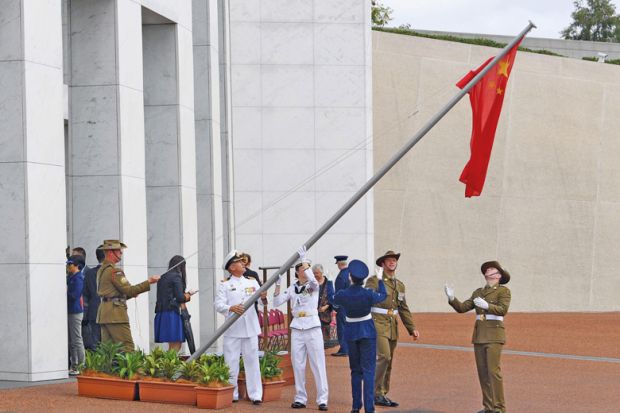Chinese students are reconsidering Australian degrees because of Canberra’s plan to limit visa numbers, an international education expert has warned.
Soaring visa rejection rates are also alarming prospective Chinese higher education students, even though approval rates for the cohort remain high.
Sociologist Angela Lehmann, chair of the Foundation for Australian Studies in China, said the proposed visa cap had featured in social media posts among Australia-bound students.
Dr Lehmann said Chinese people who had been offered places at Australian universities next year were “reassessing their options” over fears that they could be denied visas or pressured to withdraw their enrolments.
They were also aware that offers to overseas students had been rescinded by Australian universities. While this had primarily affected students from the Indian subcontinent, such nuances were often overlooked.
“They don’t understand the nitty-gritty of what’s happening in Australia. All they can see is that this has happened before. They’re now really worried that they will not get in,” Dr Lehmann said.
She said Australia’s high visa rejection rates were also unsettling students, even though 97 per cent of visa applications from university students in China are approved.
Success rates for school, English language and vocational education applicants in China are much lower, at 83 per cent, 56 per cent and 36 per cent, respectively. Dr Lehmann said this was feeding into a general perception that Chinese students were unwanted.
It also meant that universities could expect to enrol fewer Chinese graduates from Australian schools and colleges.
Declines in Chinese enrolments could be catastrophic for Australian universities, particularly research-intensive institutions. The New South Wales Audit Office’s most recent report on university finances found that Chinese students constituted 51 per cent of international enrolments across the state’s 10 universities, and considerably more at the biggest ones.
The University of Sydney obtained 40 per cent of its entire revenue from Chinese students in 2022, documents show. At UNSW Sydney, Chinese students provided 25 per cent of income.
Dr Lehmann said Australia’s visa policies were being interpreted as “anti-China policy” in some circles. Meanwhile, students, long irritated at being valued primarily for their economic contribution, were now doubly irritated that their contribution was being flouted.
“They hate being considered cash cows…but they’re also aware that they do bring an economic value to Australia, and the country would suffer without them,” she said.
She said posts on Xiahongshu, China’s answer to Instagram, had speculated how Australia would continue to fund universities and social care without money from foreign students.
Dr Lehmann said a political perception of overseas students as an “easy target”, because they did not vote, was misplaced. She said foreign learners had close ties with diaspora communities in Australia, and often used the same social media channels. “Chinese Australians are an important voting population,” she noted.
“While [students] are not voters now, they are connected very closely to voting communities and one day they may well be voters, so we shouldn’t disregard them as not connected to our democratic process.”
On 6 June, shares in the international education services firm IDP slumped to their lowest level since the first year of the coronavirus pandemic. In a market update to the Australian Securities Exchange, the company highlighted the “more restrictive policy environment”.
“IDP expects that the size of the international education market will decline by 20-25 per cent over the next 12 months,” it said.




